Geography - Weathering and Mass 1 Movement | 9th Social Science : Geography : Lithosphere – II Exogenetic Processes
Chapter: 9th Social Science : Geography : Lithosphere – II Exogenetic Processes
Weathering and Mass 1 Movement
Weathering and Mass 1 Movement
Weathering
is the
disintegration and decomposition of
materials of the earth’s crust by their exposure to atmosphere.
Movement of huge volumes of weathered rock material
down the slope due to gravity is called mass
movement or mass wastage.
Example: rock slide, land slide,
debris fall, mud flow.
The nature and magnitude of weathering differs from
place to place and region to region. Weathering is affected and controlled by
factors such as temperature, rock structure, land slope and vegetation. There
are three types of weathering
·
Physical weathering,
·
Chemical weathering and
·
Biological weathering
Physical weathering
It is the breakdown of rocks without changing their
chemical composition, through the action of physical forces. The constant
freezing and thawing of rocks during the night and day leads to the expansion
and contraction of rocks. Cracks are formed and disintegration occurs
eventually. Exfoliation, block disintegration, granular disintegration etc.,
are the different types of weathering.
Exfoliation
The alternate heating and cooling on rounded rock
surfaces leads to the peeling of rocks, layer by layer like an onion. This is
called exfoliation. Sheeting and shattering are the other
forms of exfoliation.

Granular Disintegration:
Granular disintegration takes place in crystalline
rocks where the grains of the rocks become loose and fall out. This is due to
the action of temperature and frost.
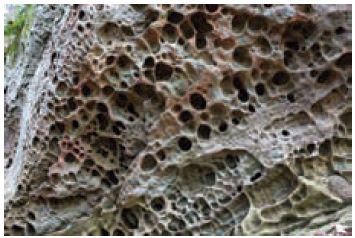
Block Disintegration:
Repeated expansion and contraction of rocks during
day and night respectively causes stress on the joints of the rocks which
results in block disintegration
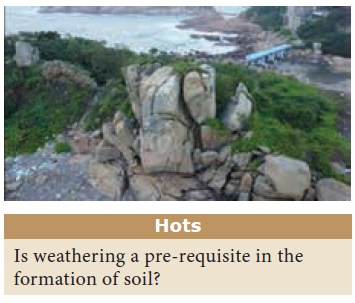
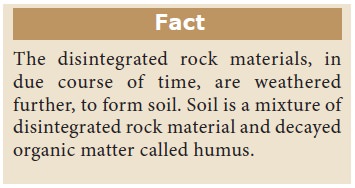
Chemical Weathering
Disintegration and decomposition of rocks
duetochemicalreactionsiscalledChemical Weathering. This is predominantly high
in the hot and humid regions such as the equatorial, tropical and sub tropical
zones. Chemical weathering takes place through the processes of oxidation,
carbonation, solution, and hydration. The agents of Chemical weathering are
Oxygen, Carbon-dioxide and Hydrogen.
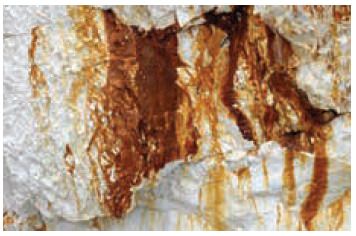
Oxidation
Oxygen in the atmosphere reacts with the iron found
in rocks, thus leads to the formation of iron oxide. This process is known as
oxidation, which results in the weakening of rocks.
Carbonation
Carbonation is the mixing of water with the
atmospheric carbon-dioxide, forming carbonic acid. Carbonation is important in
the formation of caves, in limestone region. When the carbonic acid reacts with
the carbonate rocks, the rocks get disintegrated.
Solution
The process of dissolution of rock substances in
water result in the loosening of the rock particles. This inturn breaks down
the rocks.
Hydration
Certain chemicals in the rock enlarge in size in
humid conditions. These minerals found in the rock swell and this results in
the development of cracks and the rock wears down. This type of weathering is
called hydration.
Biological Weathering
Biological weathering occurs due to the penetration
and expansion of plant roots, earthworms, burrowing animals (rabbits, rats) and
some human activities.
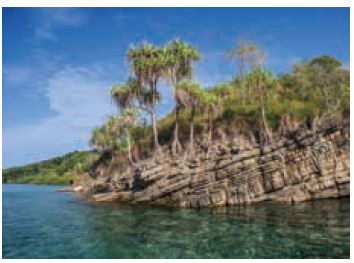
Related Topics